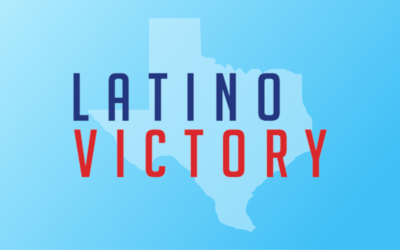Whenever there’s a spike in border crossings, like what’s been seen in recent months, progressives often bring up the idea of a Marshall Plan for Central America. Migrants are fleeing the Northern Triangle (Honduras, El Salvador, and Guatemala) because of violence and poverty, so the logic is that fixing those problems will reduce the incentive to come to the United States. Former HUD Secretary Julian Castro touted such a plan during his 2020 presidential bid. Talking of a Central American Marshall Plan will undoubtedly arise again as the Biden administration struggles to deal with the border crisis. It seems like an attractive solution at face value, a way of getting to the root cause of the problem that’s far more humane than a wall or separating families.
Indeed, this approach has been tried to an extent. The Obama administration steadily increased aid to Central America to stem the flow of migrants, requesting $1 billion in its final year. For all its talk of reducing illegal immigration, one would expect the Trump administration would have continued if not ramped up this aid. Instead, the Trump administration did the opposite, slashing aid to Central America and at one point cutting it off entirely. With Biden now proposing $4 billion for the Northern Triangle, hopes of a Central American Marshall Plan are being revived. Some might even want to go higher than that, as the original Marshall Plan doled out $130 billion in today’s money over the course of four years.
However, while it may appeal to our humanitarian instincts, there are reasons to doubt the efficacy of a Marshall Plan for Central America. “Marshall Plan for X” might be one of the most overused phrases in foreign policy circles. Using it often betrays a misunderstanding of both the original Marshall Plan and its applicability to modern circumstances.
First, it’s important to know what the Marshall Plan was and what its effects were. In the aftermath of World War II, the United States sent a massive influx of foreign aid to Europe. It was a win-win, European countries got money to rebuild their war-torn economies and the United States got strong and grateful allies in its struggle against communism. Given the rapid economic recovery of Europe, the Marshall Plan is often celebrated as one of America’s greatest foreign policy achievements.
However, the actual impact of the Marshall Plan is hotly debated by historians, with most agreeing that it doesn’t deserve sole credit for Europe’s economic revival. The reality is that the European recovery had already started before the Marshall Plan. The money accounted for less than 3 percent of the combined national incomes of the recipient countries. Furthermore, there is no correlation between how much aid countries received and how well they did; France and Britain received more money but did not recover as fast as West Germany. The Marshall Plan undoubtedly helped, but it didn’t single-handedly save the economies of Europe. European countries would have probably recovered eventually even if they received no economic aid from the United States, although the recovery would have been slower and weaker.
Countries like France, Britain, and West Germany were industrialized economies with a history of strong institutions long before the Marshall Plan came around. They had been devastated by World War II, but the pre-conditions for a post-war boom, such as institutional know-how, were still there. However, when the United States has tried to replicate the Marshall Plan in countries that are not like Western Europe, the results have been disappointing, to stay the least. A recent example is Iraq and Afghanistan, where the United States has actually spent more money on foreign aid than it did in the Marshall Plan. Despite nearly $200 billion spent over the course of nearly two decades, both countries remain poor and unstable.
And that gets to the heart of the problem with a Marshall Plan for Central America. The countries of the Northern Triangle are closer on the spectrum to Iraq or Afghanistan than they are to France or Germany. Honduras, Guatemala, and El Salvador have all been plagued by weak institutions, extreme poverty, and corruption for decades. A Central American Marshall Plan wouldn’t have to merely facilitate recovery, it would face the much more daunting challenge of building things from scratch.
To make matters worse, Central America has been wracked by violence for years. Gangs like MS-13 and 18th Street, which ironically started in the United States and were exported to Central America when their members were deported, have made the Northern Triangle one of the most violent regions in the world. Gang violence often resembles low-intensity warfare more than crime and government crackdowns have only made things worse. El Salvador and Honduras had the highest homicide rates globally at certain points, outstripping countries like Iraq, Afghanistan, and Syria. Fortunately, violence has plummeted during the pandemic, but it may return as COVID-19 subsides.
Obviously, violence is not good for economies and it can derail any attempt to replicate the Marshall Plan’s success. The original Marshall Plan occurred when World War II was over and Europe was peaceful. In contrast, the United States’ failed attempts to rebuild Iraq and Afghanistan occurred as both countries grappled with well-armed and highly motivated insurgencies. Like Iraq and Afghanistan, a Central American Marshall Plan would have to contend with high levels of violence and instability, except this time, it wouldn’t have help from tens of thousands of American troops. It’s highly unlikely that the United States would stomach an open-ended military occupation in the Northern Triangle (it’s also very doubtful that Central Americans would want that). Even if it did it would hardly guarantee the emergence of stable and prosperous nations.
While Honduras, El Salvador, and Guatemala will hopefully solve their current problems, it will be primarily up to Central America itself to find solutions rather than the United States. While the United States should assist these countries where it can, it must recognize that there are limits to its power and it cannot impose a solution from the top down. In the meantime, the Biden administration will have to find a humane and pragmatic way to handle large numbers of refugees and asylum seekers arriving at the border. A Marshall Plan for Central America is not a substitute for immigration policy.
Photo: Government of El Salvador / Wikimedia Commons
William serves as the Washington Correspondent for the Texas Signal, where he primarily writes about Congress and other federal issues that affect Texas. A graduate of Colorado College, William has worked on Democratic campaigns in Texas, Colorado, and North Carolina. He is an internet meme expert.




